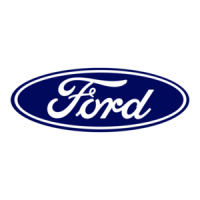
Do you have a question about the Ford 2725 and is the answer not in the manual?
Details the 4 and 6 cylinder diesel engine models covered by the handbook.
Lists naturally aspirated industrial or marine engine models.
Lists turbocharged industrial or marine engine models.
Provides essential safety recommendations for operating engines and handling fluids.
How to stop the engine using the stop lever.
How to set and adjust engine speed using the control lever.
Details the function and operation of the excess fuel device for starting.
Advice on proper clutch engagement to prevent wear.
Explains the four positions of the typical isolating switch and their functions.
Explains the ammeter's function in monitoring charging and discharge currents.
Describes the tachometer's role in indicating engine speed.
Explains the hourmeter's purpose in recording engine operating hours.
Details the oil pressure gauge and its importance for system monitoring.
Explains the fuel gauge's function to indicate fuel quantity.
Describes the temperature gauge for checking coolant temperatures.
Covers charge indicator, pre-heat button, and cold start aids.
Outlines essential checks for coolant, battery, fuel, and oil before starting a new engine.
Procedure for laying up turbocharged engines for extended periods.
Steps to take before engaging the starter motor for naturally aspirated engines.
Procedure for starting a warm naturally aspirated engine.
How to start from cold without additional cold start equipment.
Procedure for starting from cold using Thermostart aids.
Critical steps for starting turbocharged engines to ensure turbocharger lubrication.
Covers starting from cold and restarting warm turbocharged engines.
Details stopping and running-in procedures for turbocharged engines.
Importance of lubrication and maintenance, and where to find details.
Warning about handling diesel fuel and necessary precautions.
Step-by-step instructions for changing engine oil.
Specifies Ford SM-2C-1017A oil and viscosity recommendations.
How to adjust single or twin belt drives for alternator and water pump.
Procedure for adjusting single belt drive on turbocharged marine engines.
Adjusting twin belt drive on intercooled marine engines.
Instructions for adjusting the fan belt on high-level fan configurations.
Steps to empty the dust cup and replace the paper element.
Explains the function and use of the air cleaner restriction indicator.
Identifies common causes when the engine fails to start.
Troubleshooting for starter not cranking or cranking slowly.
Lists mechanical reasons for engine starting problems.
Lists fuel system causes for engine starting problems.
Important notes on over-fuelling, air cleaners, and turbocharger maintenance.
Guidelines for clean and safe refuelling to protect the fuel system.
Description of the open radiator cooling system and its maintenance.
How to use corrosion inhibitor with plain water for protection.
Adding inhibitor to supplement weak anti-freeze concentrations.
Precautions for charging batteries, especially in cold weather.
How to check and top up battery electrolyte levels.